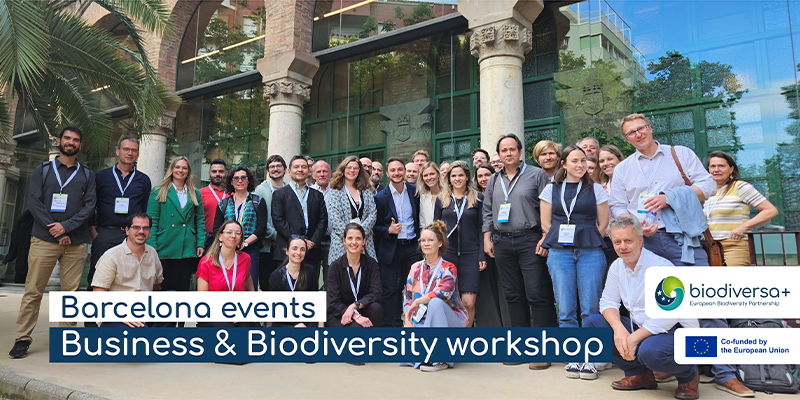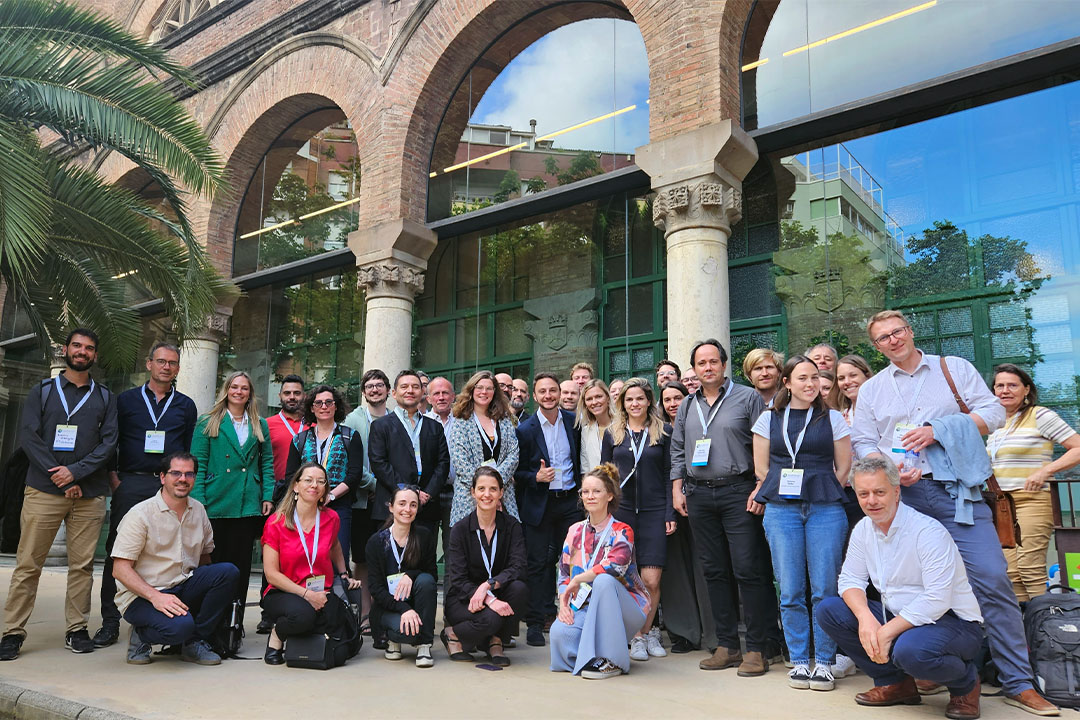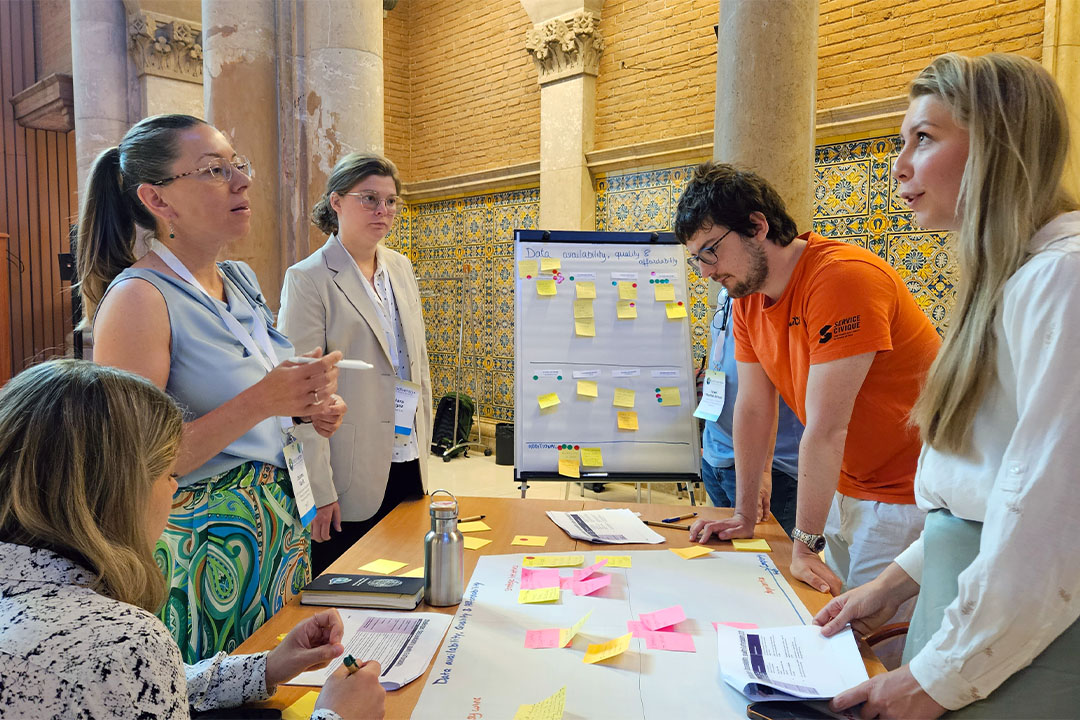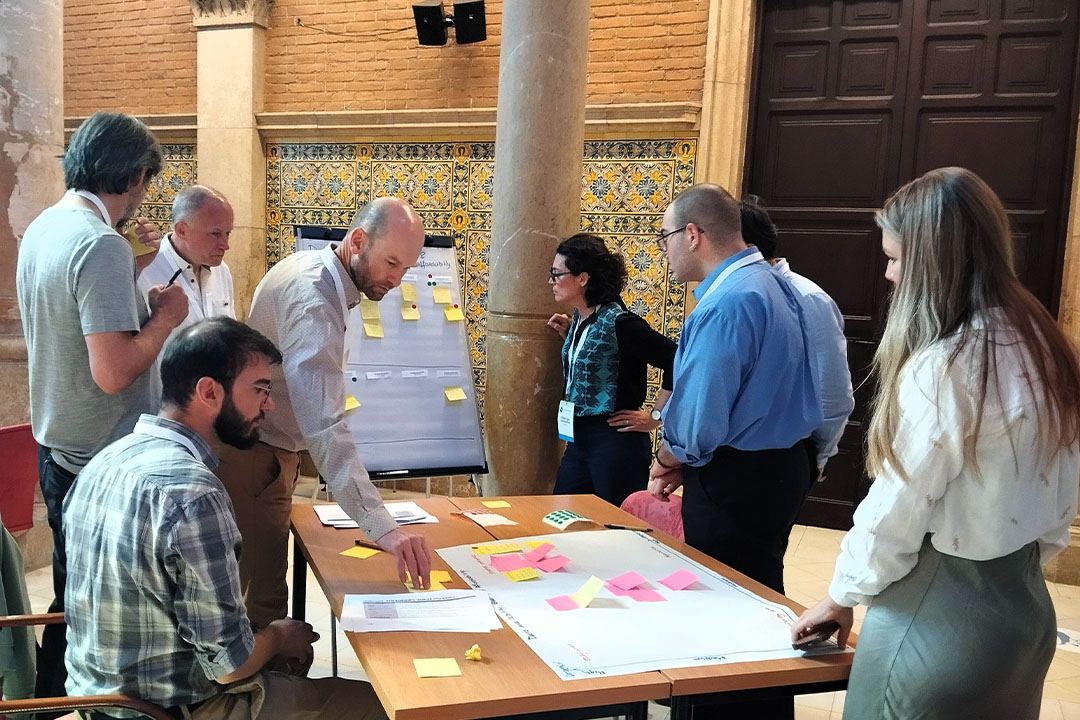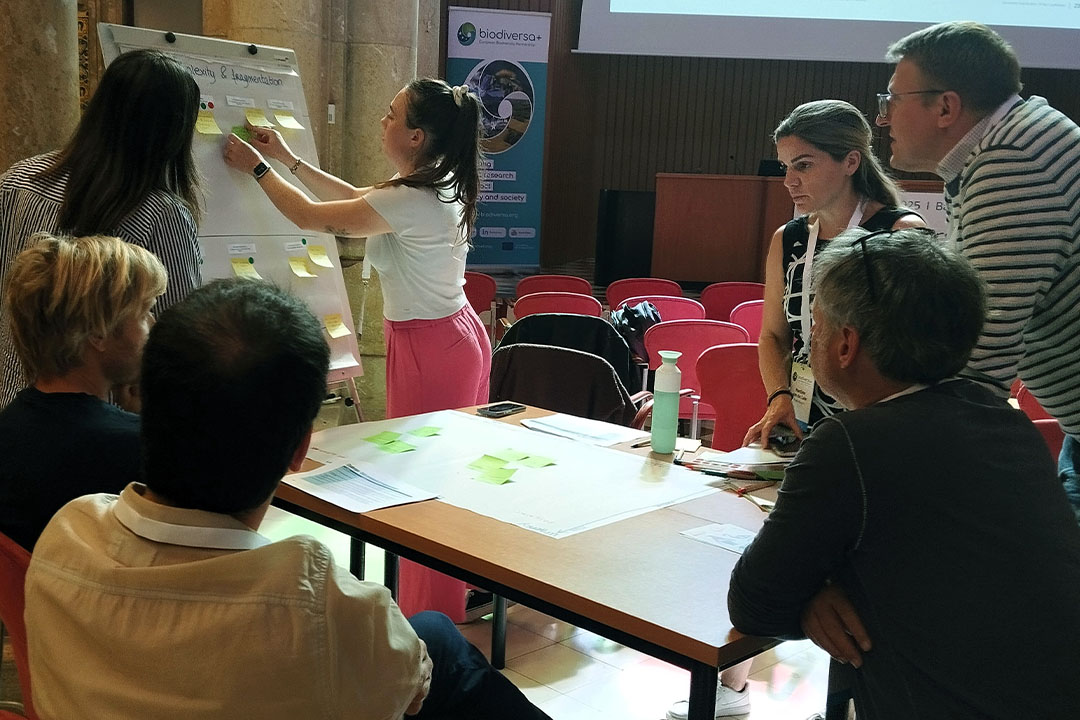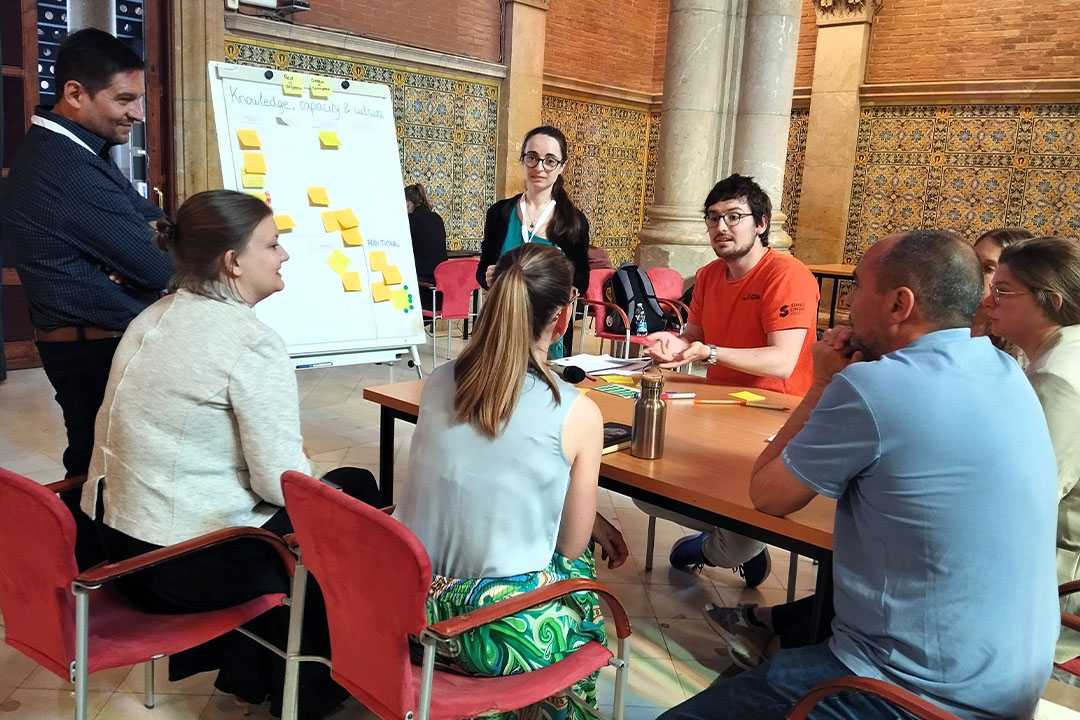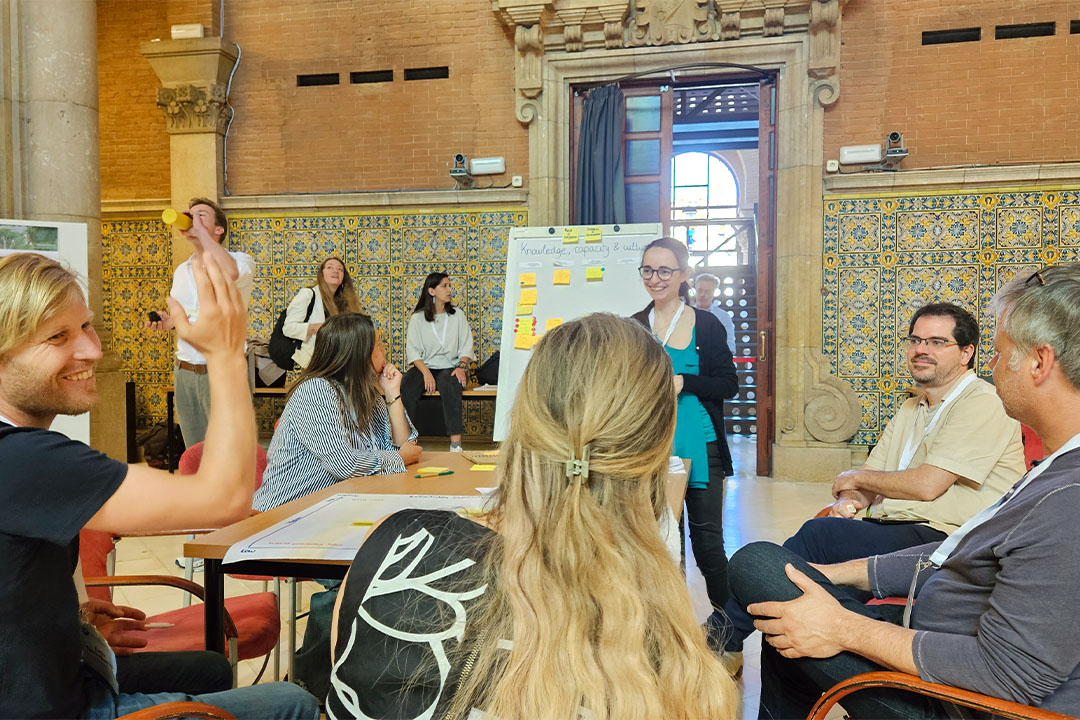With a growing number of companies and financial institutions looking to weave biodiversity into their strategies, Biodiversa+ recently hosted a two-day workshop in Barcelona. Bringing together experts from science, policy, and the private sector, the event addressed a critical challenge: how to make biodiversity data meaningful and usable for businesses.
Rethinking how we value nature
Current economic and financial systems often favour short-term gains, overlooking the long-term value of healthy ecosystems. While progress is being made through initiatives like natural capital accounting, much remains to be done. As one participant noted, “A logged forest might be valued at a million euros, but our current financial systems still struggle to structurally capture the value of a living, old-growth forest.”
This disconnect exposes companies to significant hidden risks, from disrupted supply chains and stranded assets to growing stakeholder scrutiny. It also leads to missed opportunities for innovation and long-term value creation. Reconnecting business value with ecosystem value isn’t merely about regulation or goodwill; it’s a strategic imperative for modern businesses.
A key reason for this persistent disconnect lies in the very frameworks companies use to make decisions. As Tim Polaszek from the Capitals Coalition highlighted, “Nature is still largely absent from accounting, financial, and insurance frameworks. We need to remove disincentives like harmful subsidies and introduce incentives that genuinely reward businesses for protecting nature.”
For biodiversity efforts to succeed, they must be fully integrated into business operations. “Right now, biodiversity is often isolated within the sustainability department,” Polaszek noted. “We need to bring it into core functions such as procurement, investment, and risk management.”
This transformation starts with biodiversity data that connects values with action.
Challenges for businesses
Participants challenged the idea that businesses are unwilling to engage. “Many companies want to act but face a fragmented data landscape and limited clarity on how to use or share biodiversity data,” said Elisabeth Bakker of KPMG Netherlands. “Some are already building strong internal capabilities, but others need clearer guidance and more practical support.”
Several challenges were identified and discussed:
- Limited awareness of existing data sources due to fragmentation and capacity gaps
- Fragmented, inconsistent data scattered across platforms
- Low resolution of public data for site-level or supply chain decisions
- Restrictive licensing and unclear usage terms
- Uncertainty about emerging regulations and frameworks, such as the Corporate Sustainability Reporting Directive (CSRD), the Taskforce on Nature-related Financial Disclosures (TNFD), and IFRS S1 (General Requirements for Disclosure of Sustainability-related Financial Information), combined with fewer incentives compared to climate action
Trust, transparency, and incentives
Data sharing emerged as both a barrier and a missed opportunity. Corporate contributions account for less than 5% of biodiversity data in platforms like GBIF and OBIS, with most coming from regulated environmental assessments.
“Sustainability claims have become a competitive arena, discouraging data sharing,” one participant observed. Legal concerns also play a role, with companies worrying that their data could be misinterpreted or misused. One speaker recalled a lawsuit sparked by misuse of red list data, an experience that still influences corporate caution today.
To prevent misuse, companies can obscure coordinates, though this may reduce the data’s usefulness for others. Louise Willemen, Professor at the University of Twente, stressed the importance of transparency and metadata. “Companies concerned about sensitive species data can coarse-grain location data and add user terms, but the key is transparency,” she said. “When you receive data, you want to know what’s behind it. So why not include that clarity when you share data too? Tell the world how, when, and where data were collected.”
The solutions discussed to encourage data sharing included trust-building, standardised licensing, tiered access, anonymisation, and improved metadata. Aligning data sharing with Environmental, Social and Governance (ESG) frameworks could also help to reframe it as a strategic asset.
Participants pointed to the fact that limited data sharing leads to inefficiencies. “We often see companies conducting parallel assessments, leading to duplicated work and fragmented insights,” Bakker noted, stressing that better infrastructure could unlock greater value from shared data. She highlighted initiatives such as TNFD’s Nature Public Data Facility, which are already working to improve access to nature-related data through shared infrastructure, clearer metadata standards, and governance models. “For many companies, the main barrier isn’t unwillingness but the lack of proper systems and safeguards,” she added.
From data to decision-making
Participants agreed that biodiversity data must be translated into actionable insights, not just reports. This raised the key question of metrics. “When companies want to act at the site level, many available tools become too generic, they do not provide the granular, actionable insights needed,” said Donna Teske from Naturalis Biodiversity Center. Clear and reliable metrics are essential to show how a company’s actions lead to specific biodiversity outcomes. They also help resolve baseline uncertainty by clearly defining where progress starts.
Willemen pointed to the concept of Essential Biodiversity Variables (EBVs), a harmonised and scientifically robust approach to biodiversity monitoring. It can be used across scales and serves as a critical bridge between raw observations and actionable indicators for policy and, increasingly, for business decision-making.
The availability of data aligned with EBVs, together with business-oriented frameworks like the Nature Positive Initiative’s State of Nature metrics, is crucial for companies to strategically understand and manage their impacts and dependencies, even when data are imperfect. “There’s no one-size-fits-all solution, no single best practice,” said Willemen. “You need a mix: robust data standards, clear metadata, and the flexibility to adapt depending on context and purpose.”
A strategic role for Biodiversa+
The workshop revealed a growing readiness to act and collaborate, with participants widely agreeing that Biodiversa+ has a crucial role to play in bridging sectors. Its work on transnational harmonisation, data interoperability, capacity building, and policy alignment could ensure biodiversity data serves the private sector effectively.
While institutions continue to improve the ecosystem of datasets, tools, and infrastructure that support effective action, companies need to begin using the biodiversity data that already exists. “We need to help companies understand when they have ‘enough’ information to make a decision,” said Teske. “Data doesn’t have to be perfect; it has to be good enough to act on.”
“But we must think from a business perspective—how they want and can receive answers,” Teske emphasised, noting that it’s not enough to simply show where to find biodiversity data; businesses also need guidance on interpreting it, understanding its relevance, and linking it to mitigation actions.
This guidance work is underway! The insights from this workshop will directly inform two Biodiversa+ guides scheduled for release this autumn. Stay tuned!
